Basecoat Thickness & the Difference Between Drying & Curing
Drying, setting, and curing are terms often heard in the building industry. However, they do mean different things. Their meaning is intrinsically linked to cement as many products used in the building industry are cementitious. We will often mention drying, setting, and curing times on our product pages and technical documents, therefore this blog will hopefully serve as a reference point for any questions regarding those terms.
What is drying time?
Drying refers to the evaporation of water from a cementitious material after mixing. As the water evaporates, the material loses moisture and shrinks. Drying time is influenced by factors such as the water-to-cement ratio, ambient temperature, relative humidity, and the type of cementitious material used. It is essential to consider in construction, as excessive shrinkage can lead to cracking and reduced strength.
Drying time is critical for the dimensional stability of cementitious materials. During the drying process, capillary pressure develops as water evaporates, causing the material to shrink. The process is called plastic shrinkage and occurs due to the pore system in the material. Loss of water during the initial evaporations stage leads to the formation of menisci. As the radius of the menisci shrinks, the capillary water pressure rises, causing instability. As a result, some air is allowed to penetrate the system. Excessive shrinkage can lead to cracking, compromised bond strength, and reduced durability. Some key factors affecting drying time include:
- Water-to-cement ratio: Higher water content in the mix leads to increased drying time, as more water needs to evaporate.
- Aggregate type and size: The type and size of aggregates can affect the drying time due to their ability to retain or release moisture.
- Ambient temperature and humidity: High temperatures and low humidity can accelerate the drying process, while low temperatures and high humidity can slow it down.
- Air movement and ventilation: Good air circulation can help accelerate the drying process by promoting evaporation. This can be further supplemented by introducing dehumidifiers or other means of active ventilation.
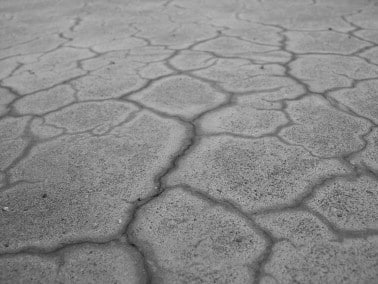
What is ‘setting’ time?
‘Setting’ is the process during which the cementitious material transitions from a plastic, workable state to a rigid, solid state. It involves the initial hydration of cement particles, which form a gel-like structure that binds the aggregates together. Setting time is influenced by factors such as the type of cement, the presence of admixtures, temperature, and the water-to-cement ratio. Proper setting time is crucial to ensure adequate strength development and prevent deformation during the early stages of construction.
Setting time is typically divided into two stages; initial setting time and final setting time. Initial setting time is the time required for the cementitious material to reach a certain level of rigidity. After this, it can no longer be easily manipulated or worked. Final setting time is a step further as it concerns itself with a level of rigidity that can sustain a certain level of load or stress. The cementitious product becomes load-bearing at this stage. The setting stage is particularly crucial to consider when working with self-levelling compounds; they will invariably be load-bearing, therefore require proper setting. EWI Store’s Self-Levelling Compound sets in 24 hours.
-
Self-Levelling Compound, Ultimate Leveller (EWI-250)
Rated 5.00 out of 5£18.52 Incl. VAT£15.43 Excl. VAT£20.58 Incl. VAT£17.15 Excl. VAT -
Self-Levelling Compound, Ultimate Leveller (EWI-250) x 40
Rated 5.00 out of 5£791.04 Incl. VAT£659.20 Excl. VAT
Setting time is crucial for the workability and early-age strength development of cementitious materials:
- Cement type: For example, rapid-hardening cement sets more quickly than ordinary Portland cement (OPC).
- Admixtures: Accelerators and retarders, can modify the setting time of cementitious materials. Accelerators speed up the setting time, while retarders slow it down.
- Temperature: Higher temperatures can accelerate the setting process, while lower temperatures slow it down. Cold weather may require the use of accelerators to maintain proper setting times.
- Water-to-cement ratio: A higher water-to-cement ratio can increase the setting time due to the increased amount of water that needs to react with the cement particles.
What is curing time?
Curing is the process of maintaining optimal temperature and moisture conditions to allow the cementitious material to achieve its desired strength and durability. This process involves the continuation of cement hydration, which forms a strong and dense matrix. Curing time is typically measured in days or weeks. It varies depending on factors such as the type of cementitious material, the intended use of the structure, and environmental conditions.
Adequate curing time is essential to ensure that the cementitious material achieves its maximum potential strength and durability. If curing conditions are not maintained or if curing is stopped prematurely, the material may not reach its desired strength, leading to reduced performance and potential structural issues.
The curing process is affected by several factors; cement type, environmental conditions, mix proportions, and intended use and loading conditions. For instance, high early-strength cement requires shorter curing periods to reach the desired strength. Temperature and humidity play a significant role in the curing process. Hot and dry conditions may require more extended curing periods. Additional measures like wet curing or using curing compounds to prevent excessive moisture loss. Furthermore, the water-to-cement ratio and the use of supplementary cementitious materials impact curing time.
The load is something to consider before selecting your cementitious product. Heavily loaded structures or structures with high durability requirements may necessitate longer curing periods to ensure adequate strength development.
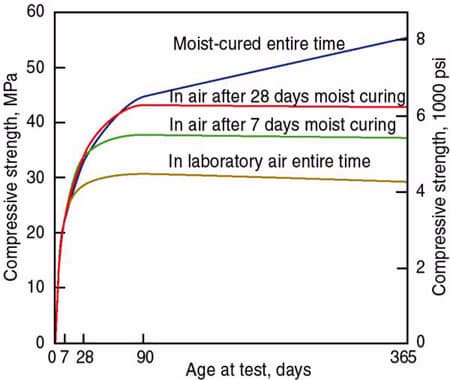
Curing methods
There are three methods of curing for cementitious products, all crucial to achieving the desired durability;
- Water curing – Continuously spraying water on the surface or submerging the cementitious material in water.
- Moist curing – Cover the surface with wet burlap, cotton mats, or plastic sheets to maintain moisture.
- Chemical curing – Applying a curing compound to the surface to slow down the evaporation of water.
Basecoat thickness
There are two schools of thought when it comes to applying basecoat; some will prefer a thin coat whilst others prefer a thicker coat. Some basecoats will require a thicker pass because they require time to cure. If they are applied too thin, the water is sucked into the brick and evaporates into the air. As a result, the basecoat dries but does not cure. This can lead to issues like cracking as the capillary pressure rises.
EWI Store products
EWI Store products are designed to dry within a reasonable period to allow for jobs to be completed quickly and efficiently. As a general rule of thumb, most will dry within 24 hours and as a result, are ready to be worked on further. However, some products are specially designed to dry more quickly. For example, Mineral Render dries within a couple of hours in the winter. This can be beneficial in various weather conditions, especially in colder weather.
Warm, sunny weather is always beneficial to accelerated drying time, but caution is advised. If products like silicone render dry too quickly in direct sunlight, they can be susceptible to cracking. We do offer products that make an impact on drying time; Render Accelerator is specially formulated to be used with Silicone and Acrylic renders to cut drying time in half.
-
Silicone Render (EWI-075) – 25KG
Rated 4.83 out of 5From £83.99 Incl. VATFrom £69.99 Excl. VAT -
Acrylic Render (EWI-010) – 25kg
Rated 4.50 out of 5From £47.99 Incl. VATFrom £39.99 Excl. VAT -
Render Accelerator (EWI-020) – 100ml
Rated 4.50 out of 5£6.72 Incl. VAT£5.60 Excl. VAT£8.30 Incl. VAT£6.92 Excl. VAT
Facebook
Twitter
LinkedIn
Your cart
Trade Account Login

We use cookies on our website to give you the most relevant experience by remembering your preferences and repeat visits. By clicking “Accept All”, you consent to the use of ALL the cookies. However, you may visit "Cookie Settings" to provide personalised consent.
Manage consent
Privacy Overview
This website uses cookies to improve your experience while you navigate through the website. Out of these, the cookies that are categorized as necessary are stored on your browser as they are essential for the working of basic functionalities of the website. We also use third-party cookies that help us analyze and understand how you use this website. These cookies will be stored in your browser only with your consent. You also have the option to opt-out of these cookies. But opting out of some of these cookies may affect your browsing experience.
Necessary cookies are absolutely essential for the website to function properly. These cookies ensure basic functionalities and security features of the website, anonymously.
| Cookie | Duration | Description |
|---|---|---|
| __stripe_mid | 1 year | This cookie is set by Stripe payment gateway. This cookie is used to enable payment on the website without storing any patment information on a server. |
| __stripe_sid | 30 minutes | This cookie is set by Stripe payment gateway. This cookie is used to enable payment on the website without storing any patment information on a server. |
| _GRECAPTCHA | 5 months 27 days | This cookie is set by the Google recaptcha service to identify bots to protect the website against malicious spam attacks. |
| apbct_cookies_test | session | CleanTalk sets this cookie to prevent spam on comments and forms and act as a complete anti-spam solution and firewall for the site. |
| apbct_page_hits | session | CleanTalk sets this cookie to prevent spam on comments and forms and act as a complete anti-spam solution and firewall for the site. |
| apbct_prev_referer | session | Functional cookie placed by CleanTalk Spam Protect to store referring IDs and prevent unauthorized spam from being sent from the website. |
| apbct_site_landing_ts | session | CleanTalk sets this cookie to prevent spam on comments and forms and act as a complete anti-spam solution and firewall for the site. |
| apbct_site_referer | 3 days | This cookie is placed by CleanTalk Spam Protect to prevent spam and to store the referrer page address which led the user to the website. |
| apbct_timestamp | session | CleanTalk sets this cookie to prevent spam on comments and forms and act as a complete anti-spam solution and firewall for the site. |
| apbct_urls | 3 days | This cookie is placed by CleanTalk Spam Protect to prevent spam and to store the addresses (urls) visited on the website. |
| AWSALBCORS | 7 days | This cookie is managed by Amazon Web Services and is used for load balancing. |
| cookielawinfo-checkbox-advertisement | 1 year | Set by the GDPR Cookie Consent plugin, this cookie is used to record the user consent for the cookies in the "Advertisement" category . |
| cookielawinfo-checkbox-analytics | 11 months | This cookie is set by GDPR Cookie Consent plugin. The cookie is used to store the user consent for the cookies in the category "Analytics". |
| cookielawinfo-checkbox-functional | 11 months | The cookie is set by GDPR cookie consent to record the user consent for the cookies in the category "Functional". |
| cookielawinfo-checkbox-necessary | 11 months | This cookie is set by GDPR Cookie Consent plugin. The cookies is used to store the user consent for the cookies in the category "Necessary". |
| cookielawinfo-checkbox-others | 11 months | This cookie is set by GDPR Cookie Consent plugin. The cookie is used to store the user consent for the cookies in the category "Other. |
| cookielawinfo-checkbox-performance | 11 months | This cookie is set by GDPR Cookie Consent plugin. The cookie is used to store the user consent for the cookies in the category "Performance". |
| ct_checkjs | session | CleanTalk–Used to prevent spam on our comments and forms and acts as a complete anti-spam solution and firewall for this site. |
| ct_fkp_timestamp | session | CleanTalk sets this cookie to prevent spam on the site's comments/forms, and to act as a complete anti-spam solution and firewall for the site. |
| ct_pointer_data | session | CleanTalk sets this cookie to prevent spam on the site's comments/forms, and to act as a complete anti-spam solution and firewall for the site. |
| ct_ps_timestamp | session | CleanTalk sets this cookie to prevent spam on the site's comments/forms, and to act as a complete anti-spam solution and firewall for the site. |
| ct_sfw_pass_key | 1 month | CleanTalk sets this cookie to prevent spam on comments and forms and act as a complete anti-spam solution and firewall for the site. |
| ct_timezone | session | CleanTalk–Used to prevent spam on our comments and forms and acts as a complete anti-spam solution and firewall for this site. |
| elementor | never | This cookie is used by the website's WordPress theme. It allows the website owner to implement or change the website's content in real-time. |
| viewed_cookie_policy | 11 months | The cookie is set by the GDPR Cookie Consent plugin and is used to store whether or not user has consented to the use of cookies. It does not store any personal data. |
Functional cookies help to perform certain functionalities like sharing the content of the website on social media platforms, collect feedbacks, and other third-party features.
| Cookie | Duration | Description |
|---|---|---|
| __zlcmid | 1 year | This cookie is used by Zendesk live chat and is used to store the live chat ID. |
| bcookie | 2 years | LinkedIn sets this cookie from LinkedIn share buttons and ad tags to recognize browser ID. |
| bscookie | 2 years | LinkedIn sets this cookie to store performed actions on the website. |
| lang | session | LinkedIn sets this cookie to remember a user's language setting. |
| lidc | 1 day | LinkedIn sets the lidc cookie to facilitate data center selection. |
| UserMatchHistory | 1 month | LinkedIn sets this cookie for LinkedIn Ads ID syncing. |
Performance cookies are used to understand and analyze the key performance indexes of the website which helps in delivering a better user experience for the visitors.
| Cookie | Duration | Description |
|---|---|---|
| __utma | 2 years | This cookie is set by Google Analytics and is used to distinguish users and sessions. The cookie is created when the JavaScript library executes and there are no existing __utma cookies. The cookie is updated every time data is sent to Google Analytics. |
| __utmb | 30 minutes | Google Analytics sets this cookie, to determine new sessions/visits. __utmb cookie is created when the JavaScript library executes and there are no existing __utma cookies. It is updated every time data is sent to Google Analytics. |
| __utmc | session | The cookie is set by Google Analytics and is deleted when the user closes the browser. It is used to enable interoperability with urchin.js, which is an older version of Google Analytics and is used in conjunction with the __utmb cookie to determine new sessions/visits. |
| __utmt | 10 minutes | Google Analytics sets this cookie to inhibit request rate. |
| __utmv | 2 years | The __utmv cookie is set on the user's device, to enable Google Analytics to classify the visitor. |
| __utmz | 6 months | Google Analytics sets this cookie to store the traffic source or campaign by which the visitor reached the site. |
| sib_cuid | 6 months | Purechat uses this cookie to send data to purechat.com, to connect visitors to the reservation team and track visitors to stay on portal. |
| SRM_B | 1 year 24 days | Used by Microsoft Advertising as a unique ID for visitors. |
Analytical cookies are used to understand how visitors interact with the website. These cookies help provide information on metrics the number of visitors, bounce rate, traffic source, etc.
| Cookie | Duration | Description |
|---|---|---|
| _ga | 2 years | The _ga cookie, installed by Google Analytics, calculates visitor, session and campaign data and also keeps track of site usage for the site's analytics report. The cookie stores information anonymously and assigns a randomly generated number to recognize unique visitors. |
| _gat_gtag_UA_61069204_2 | 1 minute | Set by Google to distinguish users. |
| _gat_UA-61069204-2 | 1 minute | A variation of the _gat cookie set by Google Analytics and Google Tag Manager to allow website owners to track visitor behaviour and measure site performance. The pattern element in the name contains the unique identity number of the account or website it relates to. |
| _gcl_au | 3 months | Provided by Google Tag Manager to experiment advertisement efficiency of websites using their services. |
| _gid | 1 day | Installed by Google Analytics, _gid cookie stores information on how visitors use a website, while also creating an analytics report of the website's performance. Some of the data that are collected include the number of visitors, their source, and the pages they visit anonymously. |
| _uetsid | 1 day | This cookies are used to collect analytical information about how visitors use the website. This information is used to compile report and improve site. |
| CONSENT | 2 years | YouTube sets this cookie via embedded youtube-videos and registers anonymous statistical data. |
Advertisement cookies are used to provide visitors with relevant ads and marketing campaigns. These cookies track visitors across websites and collect information to provide customized ads.
| Cookie | Duration | Description |
|---|---|---|
| _fbp | 3 months | This cookie is set by Facebook to display advertisements when either on Facebook or on a digital platform powered by Facebook advertising, after visiting the website. |
| ANONCHK | 10 minutes | The ANONCHK cookie, set by Bing, is used to store a user's session ID and also verify the clicks from ads on the Bing search engine. The cookie helps in reporting and personalization as well. |
| fr | 3 months | Facebook sets this cookie to show relevant advertisements to users by tracking user behaviour across the web, on sites that have Facebook pixel or Facebook social plugin. |
| MUID | 1 year 24 days | Bing sets this cookie to recognize unique web browsers visiting Microsoft sites. This cookie is used for advertising, site analytics, and other operations. |
| NID | 6 months | NID cookie, set by Google, is used for advertising purposes; to limit the number of times the user sees an ad, to mute unwanted ads, and to measure the effectiveness of ads. |
| test_cookie | 15 minutes | The test_cookie is set by doubleclick.net and is used to determine if the user's browser supports cookies. |
| uuid | 6 months | MediaMath sets this cookie to avoid the same ads from being shown repeatedly and for relevant advertising. |
| VISITOR_INFO1_LIVE | 5 months 27 days | A cookie set by YouTube to measure bandwidth that determines whether the user gets the new or old player interface. |
| YSC | session | YSC cookie is set by Youtube and is used to track the views of embedded videos on Youtube pages. |
| yt-remote-connected-devices | never | YouTube sets this cookie to store the video preferences of the user using embedded YouTube video. |
| yt-remote-device-id | never | YouTube sets this cookie to store the video preferences of the user using embedded YouTube video. |
| yt.innertube::nextId | never | This cookie, set by YouTube, registers a unique ID to store data on what videos from YouTube the user has seen. |
| yt.innertube::requests | never | This cookie, set by YouTube, registers a unique ID to store data on what videos from YouTube the user has seen. |
Other uncategorized cookies are those that are being analyzed and have not been classified into a category as yet.
| Cookie | Duration | Description |
|---|---|---|
| _clck | 1 year | No description |
| _clsk | 1 day | No description |
| _uetvid | 1 year 24 days | No description available. |
| AnalyticsSyncHistory | 1 month | No description |
| apbct_pixel_url | session | No description |
| apbct_visible_fields_0 | session | No description |
| apbct_visible_fields_1 | session | No description |
| apbct_visible_fields_10 | session | No description |
| apbct_visible_fields_2 | session | No description |
| apbct_visible_fields_3 | session | No description |
| apbct_visible_fields_4 | session | No description |
| apbct_visible_fields_5 | session | No description |
| apbct_visible_fields_6 | session | No description |
| apbct_visible_fields_7 | session | No description |
| apbct_visible_fields_8 | session | No description |
| apbct_visible_fields_9 | session | No description |
| ct_checked_emails | session | No description |
| ct_has_scrolled | session | No description |
| ct_mouse_moved | session | No description |
| ct_screen_info | session | No description |
| ictf_master | never | No description available. |
| li_gc | 2 years | No description |
| m | 2 years | No description available. |
| SM | session | No description available. |
| testinfinitycookie | session | No description |
| woocommerce_show_tax | 7 days | No description available. |
| wp_woocommerce_session_c5ac76b408021294cb56bcc27eddf8a1 | 2 days | No description |


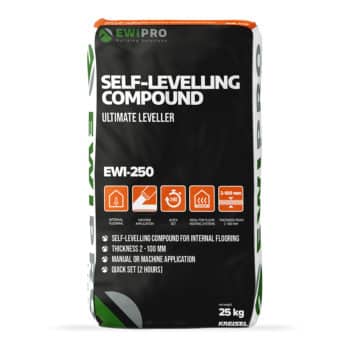
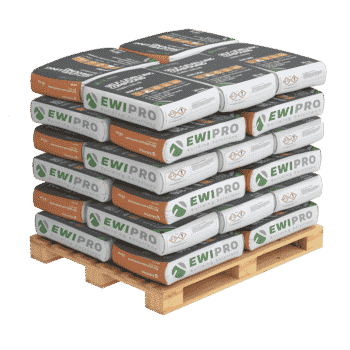
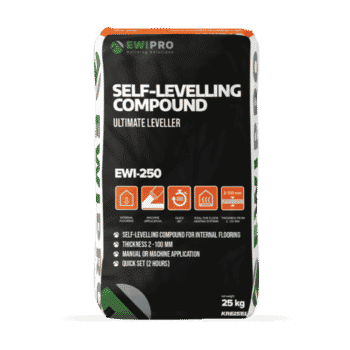
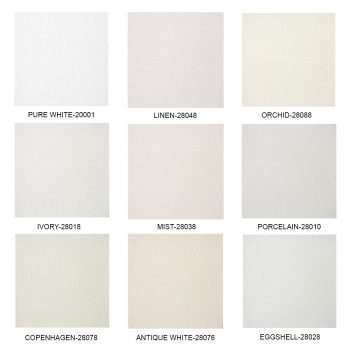
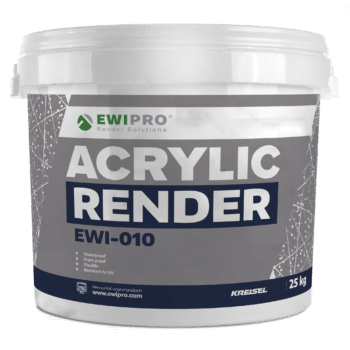
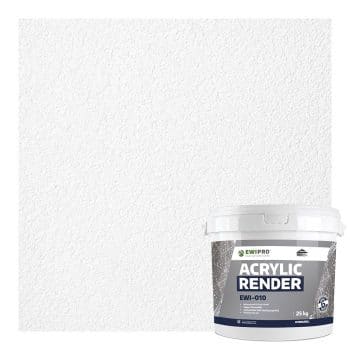

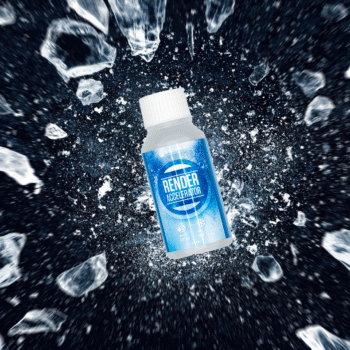
4 thoughts on “Basecoat Thickness & the Difference Between Drying & Curing”
Do you have any examples of this self-levelling in action?
Hi Seb, we do! On our YouTube channel
Is there any solutions for high humidity areas? Don’t think just render accelerator will do it, and we’ve got basecoat to dry as well
Hi Paul, an indirect fired heater and dehumidifier can both aid in this. Indirect fired heaters provide dry warm air which helps to evaporate moisture from the basecoat and accelerate drying.